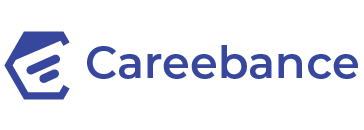The quest for talent equity stands as one of the most critical challenges facing modern organizations. Despite widespread recognition of the importance of diverse and inclusive workplaces, unconscious bias continues to influence hiring decisions, potentially limiting both organizational success and individual opportunities. This comprehensive analysis explores how organizations can systematically reduce bias in their hiring processes through evidence-based strategies, advanced technologies, and structured methodologies. Our research reveals that companies implementing robust bias reduction strategies have achieved up to 70% improvement in workforce diversity while simultaneously enhancing the quality of their hires.
Understanding the Impact of Hiring Bias
Hiring bias represents more than just a moral challenge—it constitutes a significant business limitation that affects organizational performance, innovation potential, and market competitiveness. Recent studies indicate that companies in the top quartile for ethnic and cultural diversity outperform their competitors by 36% in profitability. Yet, despite this clear business case, many organizations struggle to overcome deeply embedded biases in their hiring processes.
To understand why bias persists and how to combat it effectively, we must first recognize its various forms and impacts. Bias in hiring doesn’t just affect who gets hired—it influences every stage of the talent acquisition process, from job description writing to final candidate selection. This comprehensive examination will guide organizations through the process of identifying, addressing, and eliminating bias throughout their hiring journey.
The Science of Bias in Decision-Making
Understanding Cognitive Bias
Cognitive biases are systematic patterns of deviation from norm or rationality in judgment. In hiring, these biases can manifest in numerous ways that might not be immediately apparent to decision-makers. For instance, confirmation bias leads recruiters to seek information that confirms their initial impressions while overlooking contradictory evidence. Similarly, affinity bias causes hiring managers to favor candidates who share their backgrounds or experiences.
Research from behavioral economics shows that our brains make thousands of unconscious decisions daily, using mental shortcuts (heuristics) that can lead to biased outcomes. In the context of hiring, these shortcuts can result in overlooking qualified candidates or making assumptions based on irrelevant factors. Understanding these cognitive mechanisms is the first step toward implementing effective countermeasures.
The Business Impact of Biased Hiring
The consequences of biased hiring extend far beyond the immediate hiring decision. Organizations with homogeneous workforces often struggle with:
Innovation limitations: Teams lacking diverse perspectives often miss opportunities for creative problem-solving and innovation. Studies show that diverse teams are 87% better at making decisions and demonstrate superior analytical skills.
Market understanding: Companies whose workforces don’t reflect their customer base often struggle to understand and serve their markets effectively. Research indicates that diverse companies are 70% more likely to capture new markets.
Talent pool restriction: Biased hiring processes artificially limit access to talent, potentially excluding highly qualified candidates who could contribute significantly to organizational success.
Systematic Approaches to Bias Reduction
Restructuring the Job Description Process
The journey toward bias-free hiring begins with job descriptions. Traditional job descriptions often contain unconscious bias in language choice and requirement specification. Organizations implementing AI-powered language analysis tools have found that seemingly neutral terms can carry gender or cultural biases that discourage certain candidates from applying.
For example, terms like “ninja” or “rockstar” in tech job descriptions have been shown to decrease female applicant rates by up to 50%. Similarly, extensive lists of “required” qualifications often deter qualified candidates from underrepresented groups who tend to apply only when meeting 100% of stated requirements.
Modern approaches to job description writing include:
Structured requirement analysis: Organizations should develop clear, objective criteria for each role based on actual job requirements rather than traditional assumptions. This process involves collaborating with successful incumbents and their managers to identify truly essential skills and experiences.
Inclusive language tools: Advanced natural language processing tools can help identify and eliminate biased language. These tools analyze job descriptions for potentially exclusionary terms and suggest neutral alternatives that maintain the intended meaning while appealing to a broader candidate pool.
Implementing Blind Recruitment Practices
Blind recruitment represents a powerful tool in the fight against unconscious bias. This approach involves removing identifying information from applications during the initial screening stages. Organizations implementing comprehensive blind recruitment programs have seen remarkable results:
A major consulting firm found that removing names from resumes led to a 70% increase in the likelihood of minority candidates progressing to the interview stages. Similarly, a technology company reported a 54% increase in diversity among new hires after implementing blind skills assessments.
The key components of effective blind recruitment include:
Standardized application formats: Creating structured application forms that focus on relevant skills and experiences while omitting potentially biasing information like names, ages, and educational institutions.
Automated screening tools: Using AI-powered platforms that evaluate candidates based purely on job-relevant criteria, ensuring consistent and objective initial assessments.
Technology’s Role in Bias Reduction
AI and Machine Learning Solutions
Artificial Intelligence and Machine Learning technologies have emerged as powerful tools in the fight against hiring bias, though their implementation requires careful consideration to avoid perpetuating existing biases. When properly designed and monitored, AI-powered hiring tools can:
Analyze job descriptions for bias: Natural Language Processing (NLP) algorithms can identify potentially biased language and suggest neutral alternatives.
Screen resumes objectively: Machine learning models can be trained to evaluate candidates based solely on job-relevant criteria, ignoring demographic factors.
Predict candidate success: Advanced analytics can identify success patterns based on objective performance data rather than subjective assessments.
Implementation Considerations
While technology offers powerful solutions for bias reduction, successful implementation requires careful attention to several key factors:
Data quality and diversity: AI systems must be trained on diverse, representative datasets to avoid perpetuating historical biases.
Regular auditing: Organizations should implement regular bias audits of their AI systems to ensure they maintain fairness across different demographic groups.
Human oversight: While AI can help reduce bias, human judgment remains crucial for contextual understanding and final decision-making.
Structured Interview Processes
Developing Standardized Assessments
Structured interviews represent one of the most effective methods for reducing hiring bias. Organizations implementing well-designed structured interview processes have seen up to 40% improvement in the quality of their hiring decisions while significantly reducing demographic disparities.
Key elements of an effective structured interview process include:
Predetermined questions: Develop a standard set of job-relevant questions that all candidates answer, ensuring consistent evaluation criteria.
Behavioral anchors: Creating clear rating scales with specific behavioral examples for each competency being assessed.
Multiple interviewers: Incorporating diverse perspectives through panel interviews or sequential interviews with different team members.
Training and Implementation
Success in structured interviewing requires comprehensive training and consistent implementation:
Interviewer training: All interviewers should receive thorough training in structured interview techniques, bias awareness, and proper evaluation methods.
Documentation requirements: Establishing clear procedures for documenting candidate responses and evaluations helps ensure consistency and provides data for process improvement.
Regular calibration: Conducting regular calibration sessions among interviewers helps maintain consistency and identifies areas for process improvement.
Measuring Success and Continuous Improvement
Key Performance Indicators
Organizations must establish clear metrics to track the effectiveness of their bias reduction efforts:
Diversity metrics: Tracking changes in candidate pool diversity, interview progression rates, and hiring outcomes across demographic groups.
Quality of hire: Monitoring performance ratings, retention rates, and promotion rates across different demographic groups.
Process consistency: Measuring adherence to structured processes and inter-rater reliability among interviewers.
Feedback Loops and Iteration
Continuous improvement requires regular review and refinement of bias reduction strategies:
Regular audits: Conducting periodic reviews of hiring outcomes to identify potential areas of bias or disparity.
Candidate feedback: Collecting and analyzing feedback from candidates about their experience with the hiring process.
Process refinement: Using data and feedback to continuously improve and update bias reduction strategies.
Call to Action
The journey toward bias-free hiring represents both a moral imperative and a business necessity. Organizations that successfully implement comprehensive bias reduction strategies position themselves for superior performance in an increasingly diverse and competitive global market.
To begin transforming your hiring processes:
- Assess your current hiring practices for potential sources of bias
- Implement structured processes and technology solutions to reduce subjective decision-making
- Provide comprehensive training to all stakeholders involved in hiring
- Establish clear metrics and monitoring procedures
- Partner with experts who can guide your organization’s transformation
For more information about implementing bias-free hiring practices and Careebance’s comprehensive solutions, visit www.careebance.com or contact our team at [email protected].







